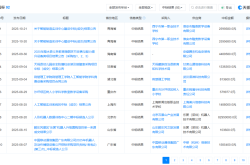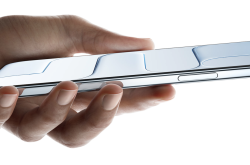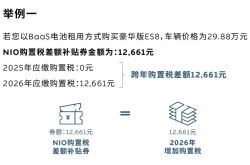Even Apple Struggles to Make It Work! eSIM Faces Immediate Backlash Post-Launch: Should Operators Step Up Their Game?
![]() 10/27 2025
10/27 2025
![]() 568
568
"Chinese Version" eSIM: A Far Inferior Experience Compared to Physical SIM Cards
On October 22, 2025, the Chinese iteration of the iPhone Air, boasting a complete eSIM solution, was officially released. Accompanying it were eSIM services from China's top three telecom operators, enabling Chinese users to finally adopt the "cutting-edge" eSIM technology nearly nine years after its global introduction.
However, the current eSIM experience for Chinese iPhone Air users seems to fall short of expectations.
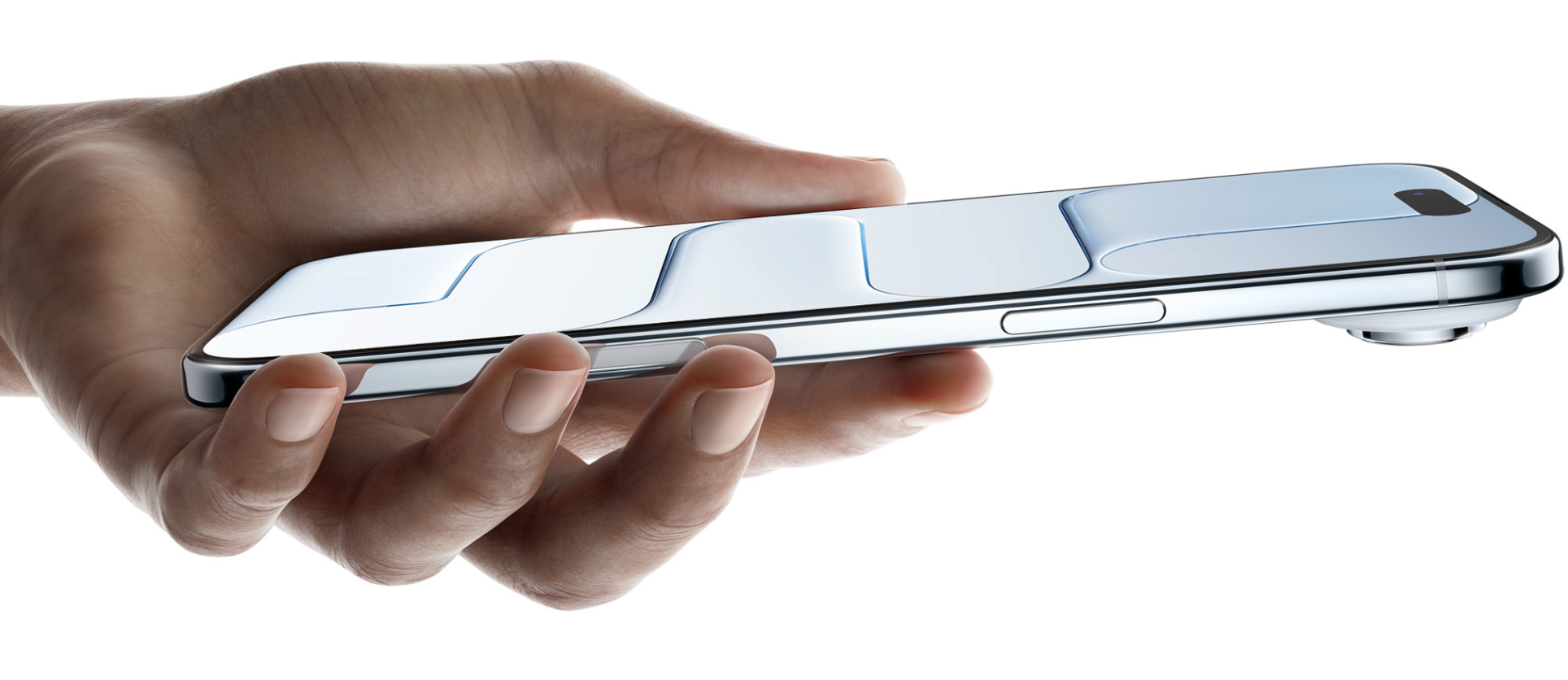
Image Source: Apple
Despite the elimination of the SIM card slot, it doesn't mean we can completely bid farewell to carrier stores. At present, activating an eSIM necessitates a visit to a physical outlet in the location where the number is registered. Identity verification, document checks, and profile issuance must all be carried out with the assistance of store personnel. Moreover, if you need to transfer your eSIM to a new device or encounter service issues, another trip to the store is unavoidable. Considering that physical SIM cards can now be delivered and activated remotely, the requirement to visit a store for eSIM-related services is difficult to accept.
The utilization of eSIM in China is also more "restricted" than anticipated. Take the Chinese version of the iPhone Air, for instance: when switching devices, domestic eSIM users cannot transfer their service with a single click as overseas users can; they must visit a store again. Some Xiaohongshu (a popular Chinese social media platform) users have even reported their eSIM "inexplicably failing," necessitating a return to the store after just two days of use.
"Chinese Version" eSIM Experience: Is It Truly the Operators' Fault?
I understand that some may argue that the cumbersome eSIM activation and transfer processes in China are a response to the "SIM Card Crackdown" initiative, aimed at curbing the illegal and low-cost trading of SIM cards. However, Chinese users had access to "domestic" eSIM services long before the iPhone Air's release, and those eSIMs were not as troublesome as the current ones.
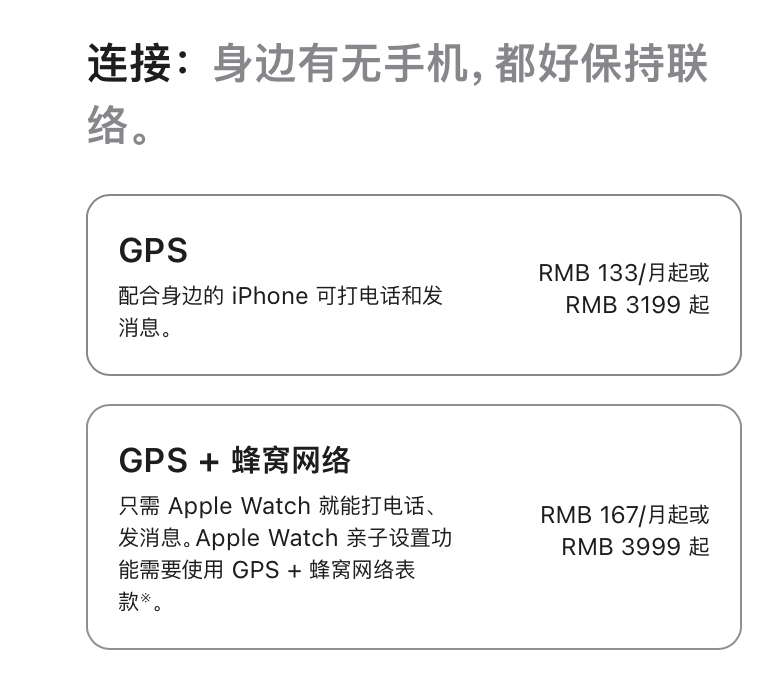
Image Source: Apple
As early as 2018, domestic operators began offering eSIM services for smartwatches like the Apple Watch Cellular, enabling multiple devices to share a single number. While the eSIM model for smartwatches differs from that of the iPhone Air, operators had already developed an online identity verification process for card issuance. Users could simply perform a "head nod" gesture on their device to activate the service.
In fact, the same process is employed for activating physical SIM cards in China: personal information is collected during the application, and online identity verification confirms activation upon delivery. Unfortunately, this streamlined process was not extended to eSIM.
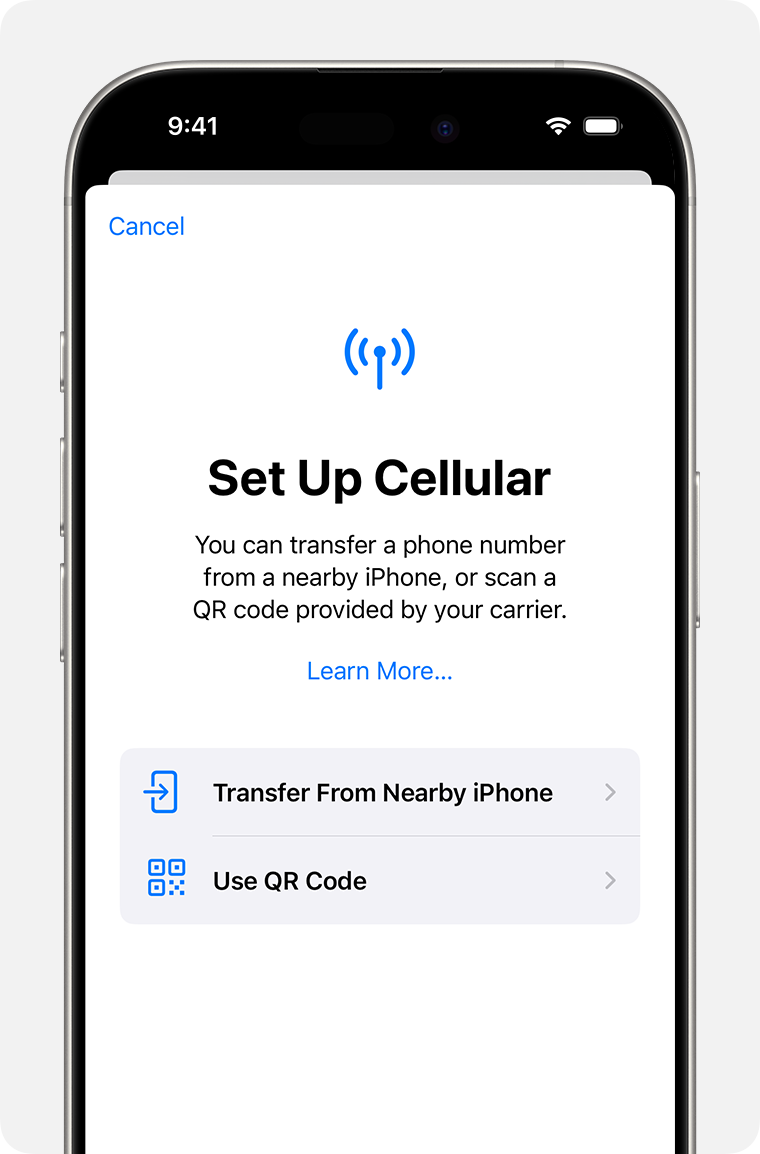
Image Source: Apple
In contrast, using eSIM with the Chinese version of the iPhone Air overseas is significantly simpler: open Settings, navigate to the eSIM addition screen, scan the QR code provided by the overseas operator, and the card is automatically issued to your phone or tablet. Afterward, simply switch cellular data to eSIM to complete the download and activation process.
Take my experience reporting overseas earlier this year as an example: from connecting to airport Wi-Fi to eSIM activation, the entire process took less than three minutes. If using an overseas phone, you can even purchase a local eSIM before departing China and start using it immediately upon arrival, eliminating the need for roaming data or frantic SIM card swapping.
Having experienced "normal" eSIM service, I am deeply dissatisfied with the current "domestic" eSIM. Nevertheless, despite my complaints, I remain optimistic about the future of eSIM in China. While the current "domestic" eSIM has numerous issues, eSIM remains the inevitable trend for the mobile industry.
Will the "Domestic" eSIM Experience Improve?
From Leitech's perspective, the perceived inconvenience of domestic eSIM stems not from technological immaturity but from its reliance on "physical SIM card era" management practices.
In the physical SIM card era, number and identity binding relied on the thin, portable SIM card—serving as both a communication credential and the final physical safeguard in risk control. With eSIM, numbers become digital profiles that can be copied, exported, and transferred. To prevent uncontrolled circulation, domestic operators have restricted activation, migration, and restoration to physical outlets.
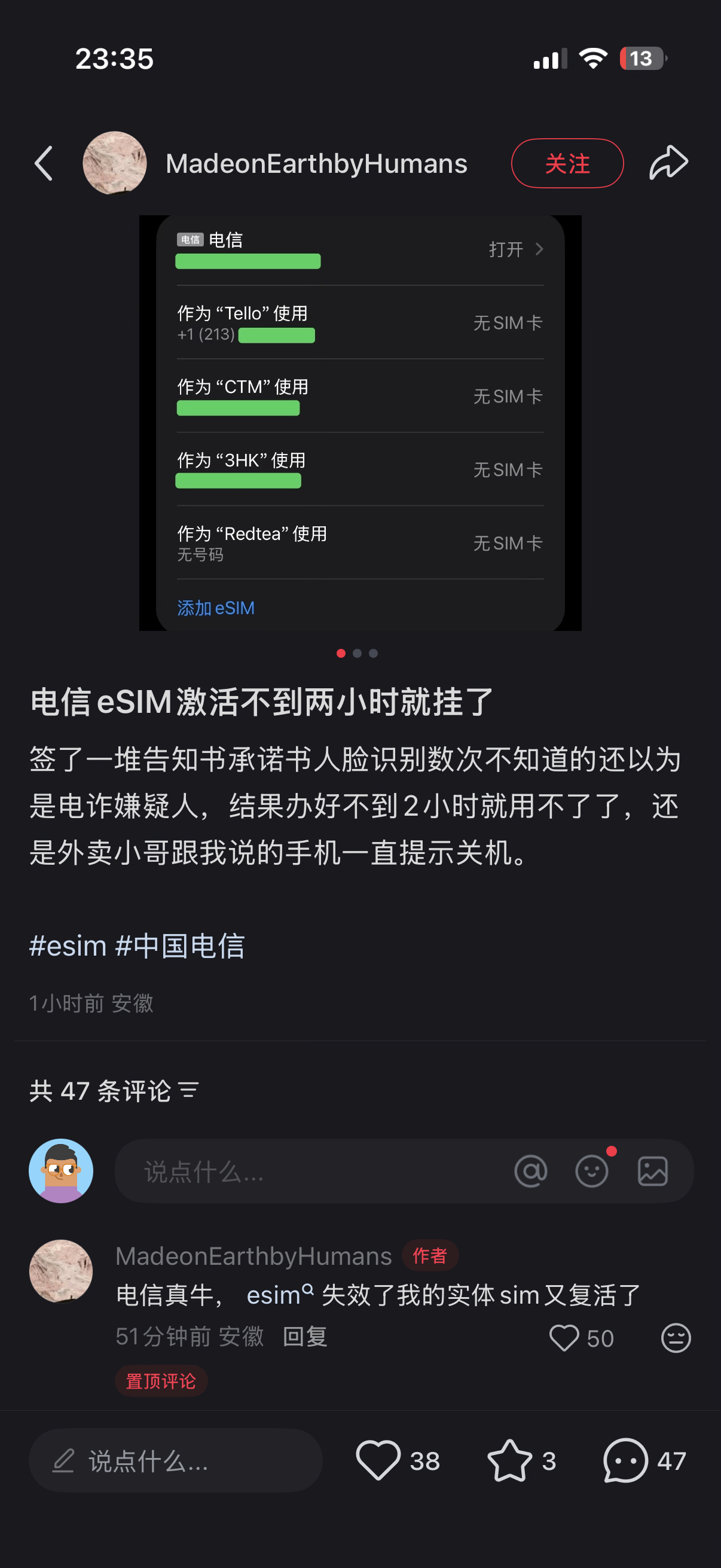
Image Source: Xiaohongshu
This is why eSIM activation requires a visit to the registered operator store, why phone swaps cannot be done directly on the device, and why configuration issues necessitate another trip—not because the technology is incapable, but because operators are hesitant to fully liberalize the system. While physical SIM card circulation requires a physical medium, eSIM can be "circulated" with just an image, posing a much higher risk.
As a result, eSIM activation and transfer require offline reconfirmation.
However, not all processes need to remain offline. Leitech believes that eSIM account opening, activation, and transfer can leverage the mature "online real-name + biometric" system already in place for physical SIM cards. As mentioned earlier, operators already offer doorstep delivery and mobile activation for physical SIM cards, demonstrating that online identity verification is feasible—it just hasn't been fully applied to eSIM yet. With operator system integration, eSIM activation and transfer could shift online.
The only processes that will likely remain offline in the near term are those involving number freezing, SIM replacement, account transfer, and risk investigation, as these require human confirmation to establish number ownership and liability boundaries. However, from a user experience standpoint, eSIM barriers will inevitably relax, eventually aligning with the convenience of overseas eSIM services.
eSIM Will Redefine "Phone Number" Logic
While current eSIM experiences remain clunky, domestic smartphone brands have shown interest in eSIM, with several announcing eSIM-compatible phones for November. eSIM will undoubtedly become an irreversible part of future communication, enabling always-connected devices without SIM card slots—especially crucial in the hybrid AI era.
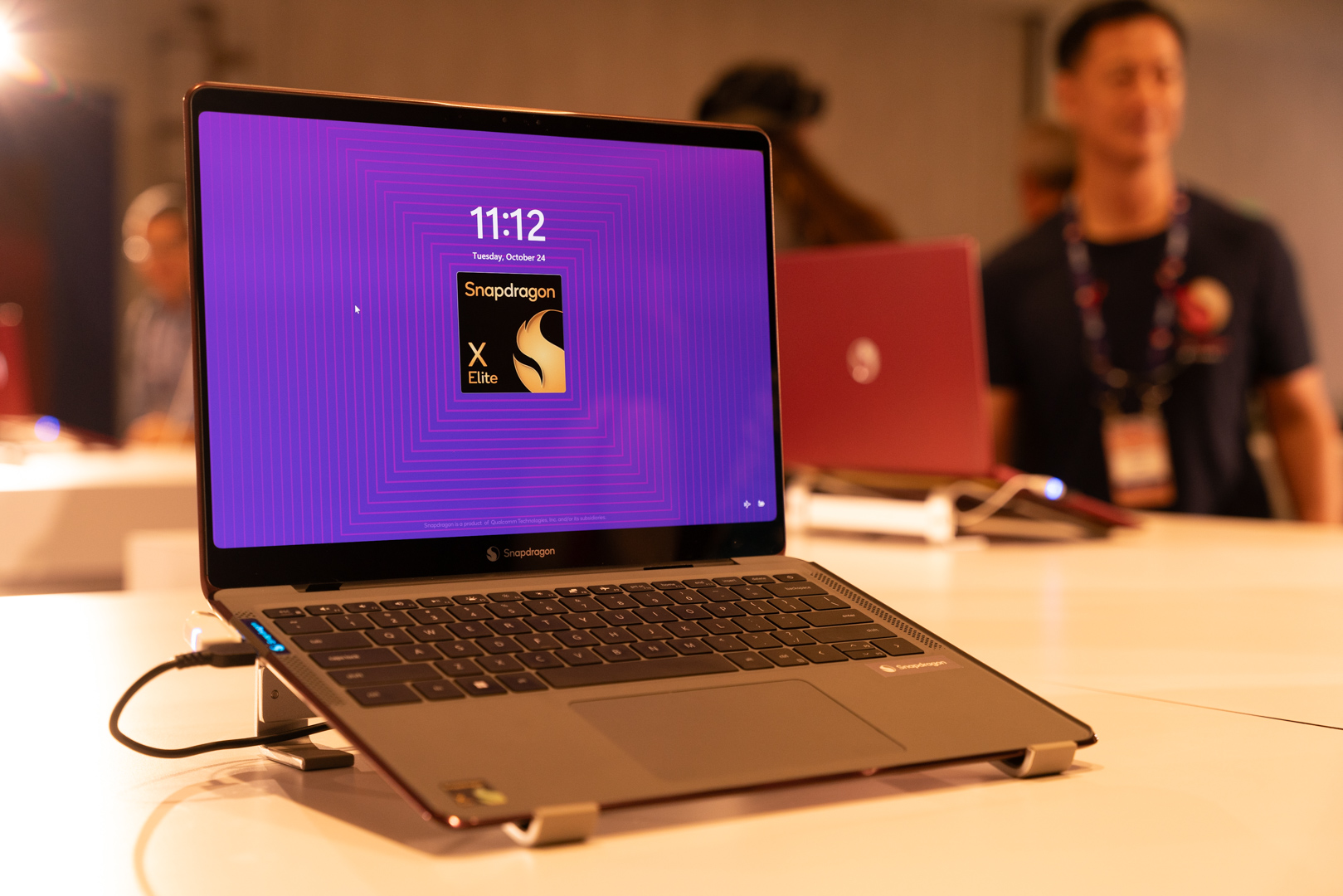
Image Source: Leitech
The shift in network access methods will also reshape traditional communication services at the industry level. For example, while current communication revolves around "numbers," it still relies on physical SIM cards. In the eSIM era, "plans" can break free from physical SIM constraints, allowing numbers to "transfer" freely between devices. Eventually, activating a pre-installed eSIM with your plan could be as simple as "logging in" to an account.
Admittedly, eSIM still faces challenges, but as a pioneer, the iPhone Air has exposed current issues to consumers and operators alike, pointing the way toward solutions. Once activation and transfer go fully online, eSIM could follow in the footsteps of NFC, VoLTE, and mobile payments, transitioning from a controversial feature to a standard one.
After all, for eSIM, the current inconveniences are just a temporary phase—widespread adoption is the future.
Source: Leitech
Image Credits: 123RF Licensed Image Library Source: Leitech

